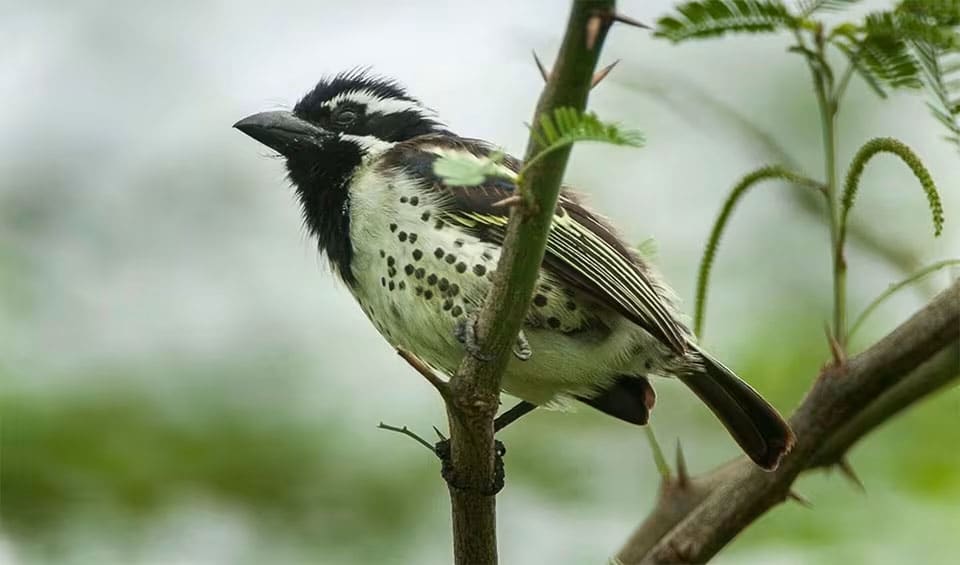This beautiful bird is adorned with a notable black neck patch and a strongly striped face, which adds to its unique appearance and makes it easily identifiable in its habitat. Found primarily in thorn scrub and dry savanna environments, the black-throated barbet occupies a range of habitats across its distribution range.
Despite its broad distribution across several countries in East Africa, including Djibouti, Eritrea, Ethiopia, Kenya, Somalia, South Sudan, Tanzania, and Uganda, the black-throated barbet faces certain conservation challenges. While it does not currently meet the criteria for Vulnerable status based on its range size or population trend, conservation efforts are still crucial to ensure the long-term survival of this species.
The population trend of the black-throated barbet appears to be relatively stable, with no significant declines or increases observed in recent years. However, without accurate population estimates, it is challenging to assess the species’ overall population size. Nevertheless, based on current knowledge, it is unlikely that the population exceeds vulnerable thresholds.
In its natural habitat, the black-throated barbet plays a vital ecological role as a seed disperser and predator of insects. By feeding on a variety of fruits and seeds, it helps facilitate the regeneration of plant species and contributes to the overall health and diversity of its ecosystem. Additionally, its predation on insects helps regulate insect populations, maintaining ecological balance within its habitat.
Distribution
 Djibouti
Djibouti Eritrea
Eritrea Ethiopia
Ethiopia Kenya
Kenya Somalia
Somalia South Sudan
South Sudan Sudan
Sudan Tanzania
Tanzania Uganda
UgandaAnything we've missed?
Help us improve this page by suggesting edits. Glory never dies!
Suggest an editGet to know me
Terrestrial / Aquatic
Altricial / Precocial
Polygamous / Monogamous
Dimorphic (size) / Monomorphic
Active: Diurnal / Nocturnal
Social behavior: Solitary / Pack / Herd
Diet: Carnivore / Herbivore / Omnivore / Piscivorous / Insectivore
Migratory: Yes / No
Domesticated: Yes / No
Dangerous: Yes / No




